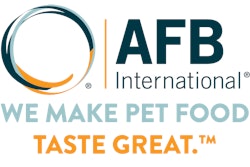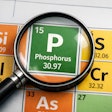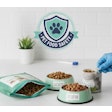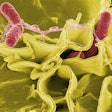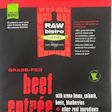
Palatability enhancers, as the name indicates, are used to affect taste, smell and texture of petfoods to increase their desirability to companion animals. Palatability is critical for manufacturers to consider when formulating a nutritionally balanced petfood. Foods for dogs and cats can be made more palatable through various means, such as an adjustment in acidity. High-intensity, savory-based palatants that utilize meat, marine, cheese and liver-based ingredients are used for enhancement purposes as well. Palatability enhancers can be used either as the sole palatant in a formula or in conjunction with meat-based enhancers to provide the best value and palatability to the petfood formulator. So, what's out there, what do they promise and what's worth checking out?
In Kristopher Figge's 2011 Petfood Forum presentation, "Kibble Shape and its Effect on Feline Palatability," the AFB International senior scientist and technical services manager shared some of the palatant company's latest research. Unlike dogs, cats tend to avoid spoilage aromas, while surface texture and size of kibble play a large role in what foods felines find palatable. AFB then researched whether or not kibble shape affected the palatability of dry cat foods.
AFB researchers used common kibble shapes like the cross, triangle, flat disc and cylinder as the variables in the study. Figge and his collegues found that kibble shape was the primary driver for palatability while texture across a given range was not. The flat disc had mid-range texture scores and was the most preferred shape by cats. The cylinder was outside the range and was least preferred. The highly preferred disc-shape is not only easy to extrude, it is also durable, has less fines than other shapes and also has a greater surface area.
Yeast products form the core of the Sensient Bio-Ingredients portfolio of palatability solutions. "In addition to providing a non-specific meaty flavor profile, yeast products also enhance general savory and cheesy notes," explains the company website. "However, a generic yeast product does not work in all applications. We understand the special requirements of low-ash diets, wet as compared to dry foods, baked biscuit and intermediate moisture treats." To maximize the impact of enhancement, Sensient Bio-Ingredients has developed separate brewers’ yeast products for applications in a wide variety of petfood diets, treats and supplements, claims the company.
All of their palatability enhancers are tested for efficacy through controlled feeding studies that measure both first-bite preference as well as total petfood consumption. All of Sensient yeast products are non-GMO and meet FDA and AAFCO guidelines, says the company. In addition to their palatants, Sensient also has the capability to create high-impact flavors for use in petfoods and pet treats.
Palatants are no longer an ingredient in just the formulater's bag of recipe tricks. Palatants, flavor enhancers, gravies and toppers can easily be purchased by consumers in most pet stores and online pet merchants. Companies like Flavorhounds and products like Stewart's Pet Food Flavor Enhancers (for dogs and cats) are examples of this trend. DIY palatants appeal to consumers because they can help a picky pet switch foods, add a little flavor to a restricted therapeutic diet or medicated meals and encourage a sick or starving animal to eat. Taste-enhancing products are available in many flavors like bacon and turkey and are available in organic, gluten-free and all-natural varieties.


